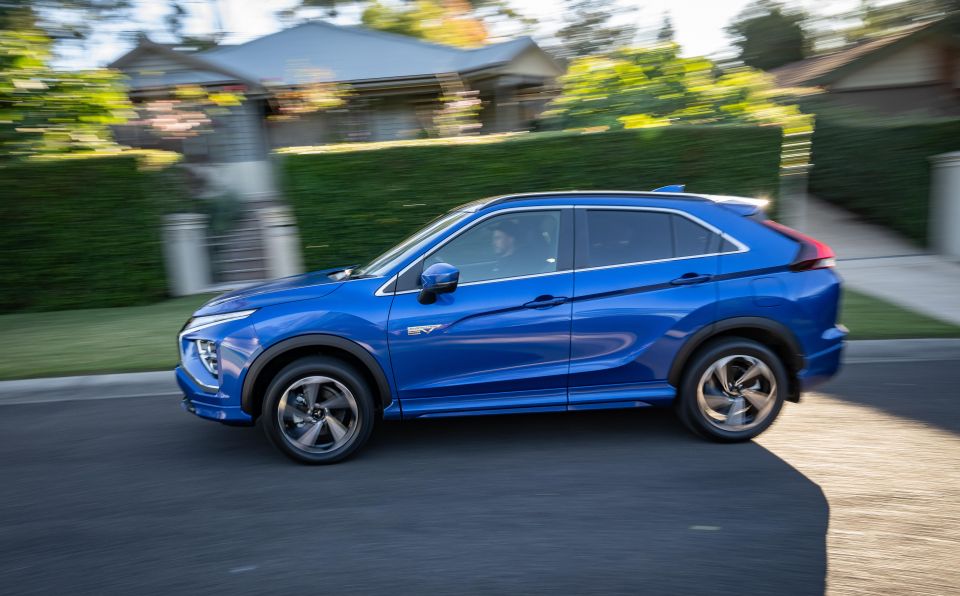Despite a long history producing plug-in hybrid vehicles (PHEVs), BYD only started selling them in Australia in 2024 – and already it’s far and away the market leader.
In the first half of 2025, total PHEV deliveries in Australia were up 210.2 per cent on the first six months of 2024, to 25,613 – that’s sales growth, if not outright sales volume, that outpaces even hybrids (up 14.9 per cent).
This means that of the total of 624,130 new vehicles delivered in Australia during the first six months of 2025, 15 per cent were hybrids, 7.6 per cent were EVs, and 4.1 per cent were PHEVs.
Hundreds of new car deals are available through CarExpert right now. Get the experts on your side and score a great deal.Browse now.

In the first half of 2025, BYD alone delivered 14,799 PHEVs, well ahead of stalwart Mitsubishi which was a distant second with 3690 deliveries.
Mitsubishi is rolling out an updated Outlander PHEV, while its Eclipse Cross PHEV is in runout. But for a company that was the first to launch a PHEV SUV in Australia all the way back in 2013, it has been rapidly overtaken by BYD.
BYD has actually been in the PHEV game longer than Mitsubishi, launching its first such model back in 2008 in China. Mitsubishi revealed its first production PHEV, based on the third-generation Outlander, in 2012.
Below is a Flourish chart showing all the brands selling PHEVs in Australia, and their total deliveries in the first half of 2025. We’ve also included the Leapmotor C10, which is technically classified as an extended-range electric vehicle (EREV).
Both of BYD’s two PHEVs in Australia alone outsold Mitsubishi’s two-model PHEV lineup.
The Shark 6 ute has proved a huge success for BYD, and so far this year it’s not only the best-selling PHEV in Australia but the 12th best-selling vehicle overall.
Sitting in second is the Sealion 6 mid-size SUV, an arch-rival for the Outlander PHEV that sits in third place.
The GWM Haval H6 took fourth position, and its sales should get a boost with the introduction of a PHEV powertrain in the ‘standard’ body, joining the Haval H6 GT PHEV ‘coupe SUV’ launched earlier this year.

Behind this sit Mazda’s CX-60 and CX-80 SUVs. The Japanese brand is currently Australia’s third largest PHEV brand by sales volume.
A new name on these sales charts is Jaecoo, with its first (and thus far only) PHEV, the J7 SHS SUV.
Jaecoo was the 10th best-selling PHEV brand, and its J7 was the 10th best-selling PHEV.
Below is a chart showing total delivery figures by model for the first half of 2025.
BYD only sells PHEV versions of its Sealion 6 and Shark 6; likewise BMW with its XM.
However, where a brand also offers non-PHEV versions of a model, we’ve detailed below the total percentage of sales that PHEV variants account for.
| Model | Total deliveries | Total PHEV deliveries | PHEV percentage |
|---|---|---|---|
| Mercedes-AMG GT 4-Door Coupe | 2 | 2 | 100.0% |
| Peugeot 508 | 2 | 2 | 100.0% |
| Bentley Continental | 30 | 29 | 96.7% |
| Bentley Flying Spur | 6 | 5 | 83.3% |
| Ferrari coupe/convertible range | 85 | 57 | 67.1% |
| Peugeot 408 | 58 | 26 | 44.8% |
| Jaecoo J7 | 627 | 275 | 43.9% |
| Ford Escape | 5 | 2 | 40.0% |
| Volvo XC90 | 370 | 146 | 39.5% |
| Leapmotor C10 | 309 | 119 | 38.5% |
| BMW 5 Series | 173 | 65 | 37.6% |
| Mazda CX-80 | 2065 | 756 | 36.6% |
| McLaren Artura | 39 | 14 | 35.9% |
| Porsche Panamera | 59 | 20 | 33.9% |
| Lamborghini Revuelto | 58 | 19 | 32.8% |
| Cupra Leon | 128 | 40 | 31.3% |
| Volkswagen Touareg | 472 | 145 | 30.7% |
| Mazda CX-60 | 2821 | 765 | 27.1% |
| Mitsubishi Outlander | 11399 | 2961 | 26.0% |
| Porsche Cayenne | 324 | 83 | 25.6% |
| Alfa Romeo Tonale | 96 | 23 | 24.0% |
| Mitsubishi Eclipse Cross | 3262 | 729 | 22.3% |
| Cupra Formentor | 909 | 201 | 22.1% |
| GWM Cannon Alpha | 1063 | 213 | 20.0% |
| Mercedes-Benz C-Class | 816 | 160 | 19.6% |
| Jeep Compass | 115 | 22 | 19.1% |
| BMW X3 | 2441 | 445 | 18.2% |
| Jaguar F-Pace | 199 | 36 | 18.1% |
| Range Rover | 224 | 40 | 17.9% |
| Range Rover Evoque | 332 | 59 | 17.8% |
| Mercedes-Benz E-Class | 297 | 52 | 17.5% |
| GWM Haval H6 | 6909 | 1172 | 17.0% |
| Porsche Cayenne Coupe | 481 | 78 | 16.2% |
| Lexus RX | 1008 | 149 | 14.8% |
| Audi Q5 | 1659 | 234 | 14.1% |
| Land Rover Discovery Sport | 202 | 26 | 12.9% |
| Volvo XC60 | 857 | 107 | 12.5% |
| Range Rover Sport | 1230 | 142 | 11.5% |
| Audi Q8 | 218 | 25 | 11.5% |
| Volvo S60 | 37 | 4 | 10.8% |
| Range Rover Velar | 197 | 17 | 8.6% |
| Kia Sorento | 5165 | 400 | 7.7% |
| Mercedes-Benz GLC Coupe | 805 | 61 | 7.6% |
| MG HS | 2082 | 154 | 7.4% |
| Lexus NX | 3080 | 227 | 7.4% |
| BMW X5 | 1998 | 139 | 7.0% |
| Land Rover Defender | 1968 | 98 | 5.0% |
| Jeep Grand Cherokee | 504 | 18 | 3.6% |
| Mercedes-Benz GLC | 2145 | 67 | 3.1% |
| Mercedes-AMG GT | 68 | 2 | 2.9% |
| Peugeot 308 | 51 | 1 | 2.0% |
| Ford Ranger | 28311 | 118 | 0.4% |
MORE: Australia’s best-selling hybrids halfway through 2025
MORE: Australia’s best-selling EVs in the first half of 2025
MORE: VFACTS: Australia’s best-selling brands and models in the first half of 2025

